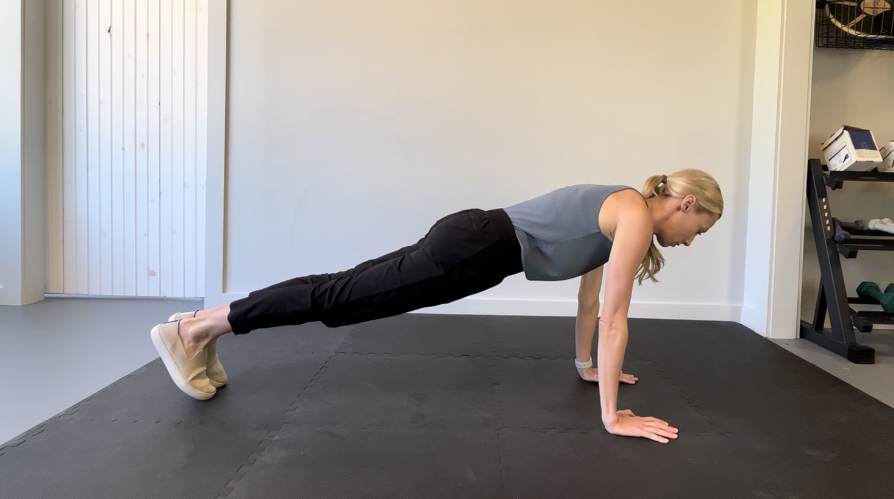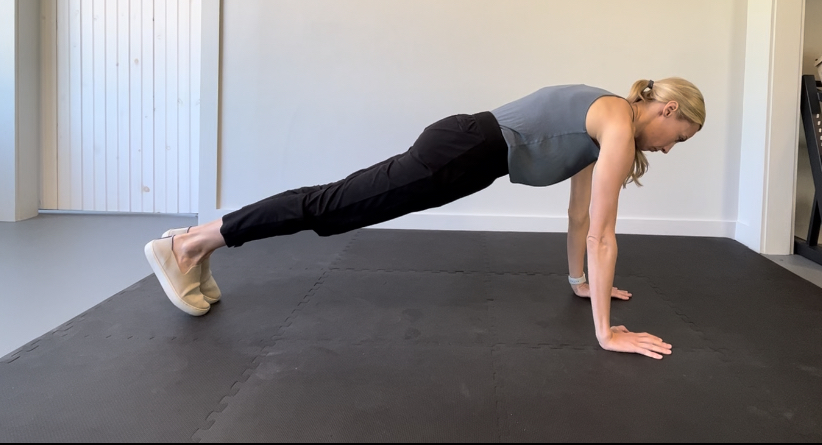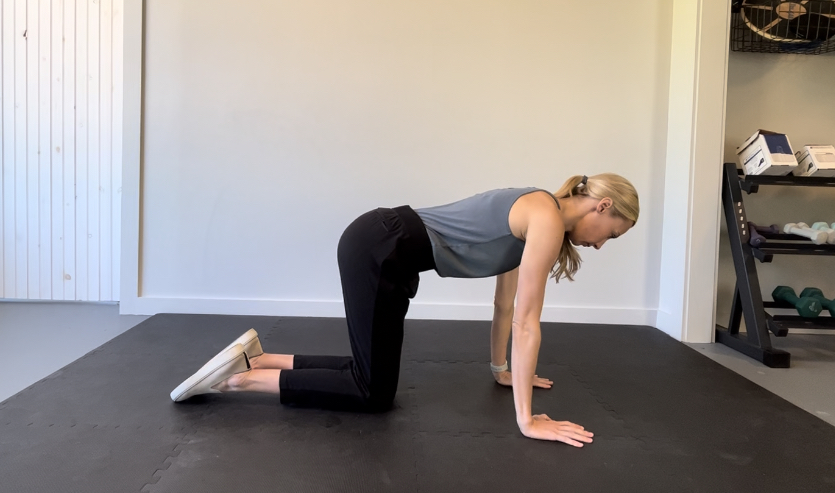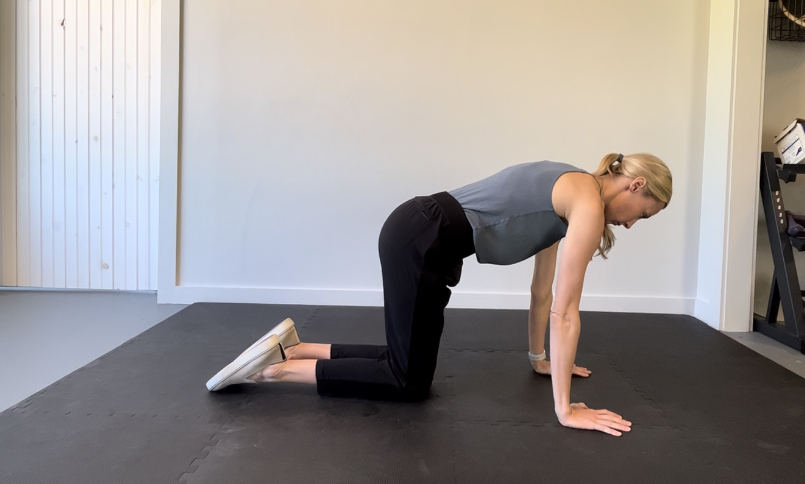Winging It With The Serratus Anterior
- Kate Mihevc Edwards PT, DPT
- May 2, 2023
- 6 min read
Updated: Jul 20, 2023
Are you a cyclist with neck pain and stiff shoulders? Have you experienced pinching and pain in the shoulder with overhead lifting? For both issues, training the serratus anterior muscle may help improve these complaints!
In my previous two blog posts for this series, The Thankless Posterior Tibialis and The Soleus: An Unsung Hero in Runners, I discussed the importance of training these two commonly overlooked lower body muscles for endurance athletes. These muscles are not always included in an endurance athlete's training program. However, incorporating specific training to these muscle groups, can improve efficiency and decrease overall risk for injury because of their key functions for the running and endurance athlete (HINT: See blog posts above!). For the third blog of the underrated, undervalued, and neglected muscle series, I am going to be covering another highly overlooked muscle that is heavily involved in cycling, overhead lifting, pushing, pulling, or reaching: the serratus anterior muscle.
Get to Know the Serratus Anterior

The serratus anterior muscle, also known affectionately as the “Boxer’s Muscle”, is an extremely important muscle for optimal shoulder function. It is a fan-shaped muscle that originates from the rib cage and attaches along the superior angle, medial border, and inferior angle of our shoulder blade (aka scapula). It can be divided into three parts based on its attachment sites: Superior, medial, and inferior. Each part of the muscle spans from the underside of the shoulder blade and spreads across the back and attaches into the sides of the rib cage. Due to its broad attachment, this muscle possesses many functions including facilitating the motions of protraction and upward rotation, playing key roles in shoulder postioning/stability, and even breathing!
Protraction:

Scapular protraction is when the shoulder blade moves forward around the rib cage and away from the spine. This motion is necessary during reaching away from our body, especially in front of us, and occurs with pushing or punching motions. For example, it is occurring during traditional push-ups, bench pressing, or pressing forearms into the handlebars for more stability during cycling.
Upward rotation of the shoulder blade:

Upward rotation of the shoulder blade is when the bottom of the shoulder blade begins to rotate away from the spine. This motion of the shoulder blade is necessary for lifting the arm up overhead. The serratus anterior muscle works in a team with other muscles, including the upper and lower trapezius, to provide adequate shoulder blade upward rotation necessary to get our arms fully overhead. Upward rotation is occurring in movements such as functional reaching, overhead pressing, dumbbell front or lateral raises, for example.

Shoulder stability:
In addition to protraction and upward rotation, this muscle is a key component to our shoulder stability. It keeps our shoulder blade close to our rib cage (offering support for the arm) and allows for smooth movement throughout overhead motion or any weight bearing activities such as planks, push-ups, or arm positions used in cycling. For cyclists in particular, this muscle is the primary muscle responsible for providing a stable scapular base for the shoulder girdle and hand and arm position on the handlebars throughout the duration of a ride. Ensuring that this muscle has strength and endurance can help take stress off of our neck muscles, cervical spine, upper traps, and other surrounding shoulder musculature.
Breathing:
Because this muscle is attached to our ribs, when the shoulder blades are fixed, all three parts of the serratus anterior muscle can assist in moving the ribs, and thus in the function of breathing. The serratus anterior muscle supports our breathing mechanics by lifting the rib cage for respiration and can help with optimal lung function needed for endurance sports. Breathing is one of the foundational aspects of core stability, posture, recovery, stress management, and overall health. It is so important for all individuals, but especially endurance athletes. For more detailed information on the specifics of breathing, check out one of our recent blog posts, Just Breathe.
Serratus Anterior Dysfunction
As discussed above, the serratus anterior muscle is an extremely important muscle for many reasons. Weakness, poor positioning (i.e. at longer muscle length), or inhibition of this muscle can be an underlying cause for many injuries. When this occurs, you may notice that your shoulder blades lift up from the rib cage and stick out like a shark fin. This is called scapular winging. Scapular winging can be a sign that we have weakness in the serratus anterior muscle.

Weakness of this muscle can impact our shoulder range of motion and decreases overall shoulder girdle stability. It could also increase the risk for injury to the shoulders and/or spine. A dysfunctional serratus anterior muscle will reduce scapular upward rotation and protraction and allow the humeral head to move forward and upward, potentially leading to shoulder impingement and rotator cuff injury.
Without optimal serratus anterior function, our body can adopt faulty movement patterns which could result in pain and overuse injuries due to increased load through other muscle groups, such as the upper trapezius muscle. This muscle synergistically works with the serratus anterior muscle to produce upward rotation. If the serratus anterior muscle is not doing its job, muscle imbalances could occur and contribute to conditions such as neck pain, upper back pain, shoulder impingement syndrome, rotator cuff tendinopathy, and more. A well-trained serratus anterior muscle provides us with balanced muscle recruitment around the shoulder blade necessary for optimal shoulder movement and health.
Show Your Serratus Some Love
In summary, the serratus anterior muscle is a very important muscle for overall shoulder health and scapular motion. Poor serratus anterior muscle function has been linked to many orthopedic injuries that can keep athletes from doing what they love. The good news is that we can prevent this from happening by showing our serratus anterior muscle some love. There are many excellent exercises of all levels of difficulty to strengthen and increase the activation of the serratus anterior muscle. If you are just getting started incorporating this into your training, then I have included a few serratus exercises below that serve as a great place to start. Research has shown that these produce the greatest muscle activity of the serratus anterior [1].
1) Push-up plus
This is a variation of the standard push-up, however, when performing the push-up plus, there is no lowering the body down to the floor. The push-up plus begins in a push-up position on both hands (with elbows extended) and toes on the floor. You will then push your shoulders away from the floor, allowing your shoulder blades to move around your rib cage. In a slow and controlled manner, you will slowly bring your shoulders back to starting position. This can be performed on your hands and feet like in a tall plank or push up starting position, or it can be lowered to your knees for a modification.
Modification:
If this modification is still too challenging, it can also be performed with the hands on an elevated surface or wall to make the exercise easier. This exercise is a personal favorite for serratus anterior training in cyclists, because it closely resembles the positioning and shoulder muscle recruitment that we need when applying pressure through our arms on the handlebars during cycling.
2) Dynamic Hug
This exercise is performed in a standing position with a band wrapped around your upper back and held securely in both hands. To begin, you will slowly push your arms forward and inward, as if you were giving someone a hug. Pause for a moment when your hands touch and then slowly return to starting position. Try to avoid shrugging your shoulders during this exercise.
3) Serratus punch
You will begin this exercise by laying on your back with your arm extended overhead and the elbow extended. If tolerated, it is ideal to hold a dumbbell or kettlebell for increased loading. Keeping the elbow completely straight, you will reach your hand up toward the ceiling, allowing your shoulder blade to move out and around the rib cage. Hold for a small pause and then slowly and controlled, let your shoulder blade return to starting position.
Thank you for reading!
Dr. Allison Jones, PT, DPT
References: 1. Decker, Michael J. et al. “Serratus Anterior Muscle Activity During Selected Rehabilitation Exercises.” The American Journal of Sports Medicine 27 (1999): 784 - 791.
.jpg)

















Comments